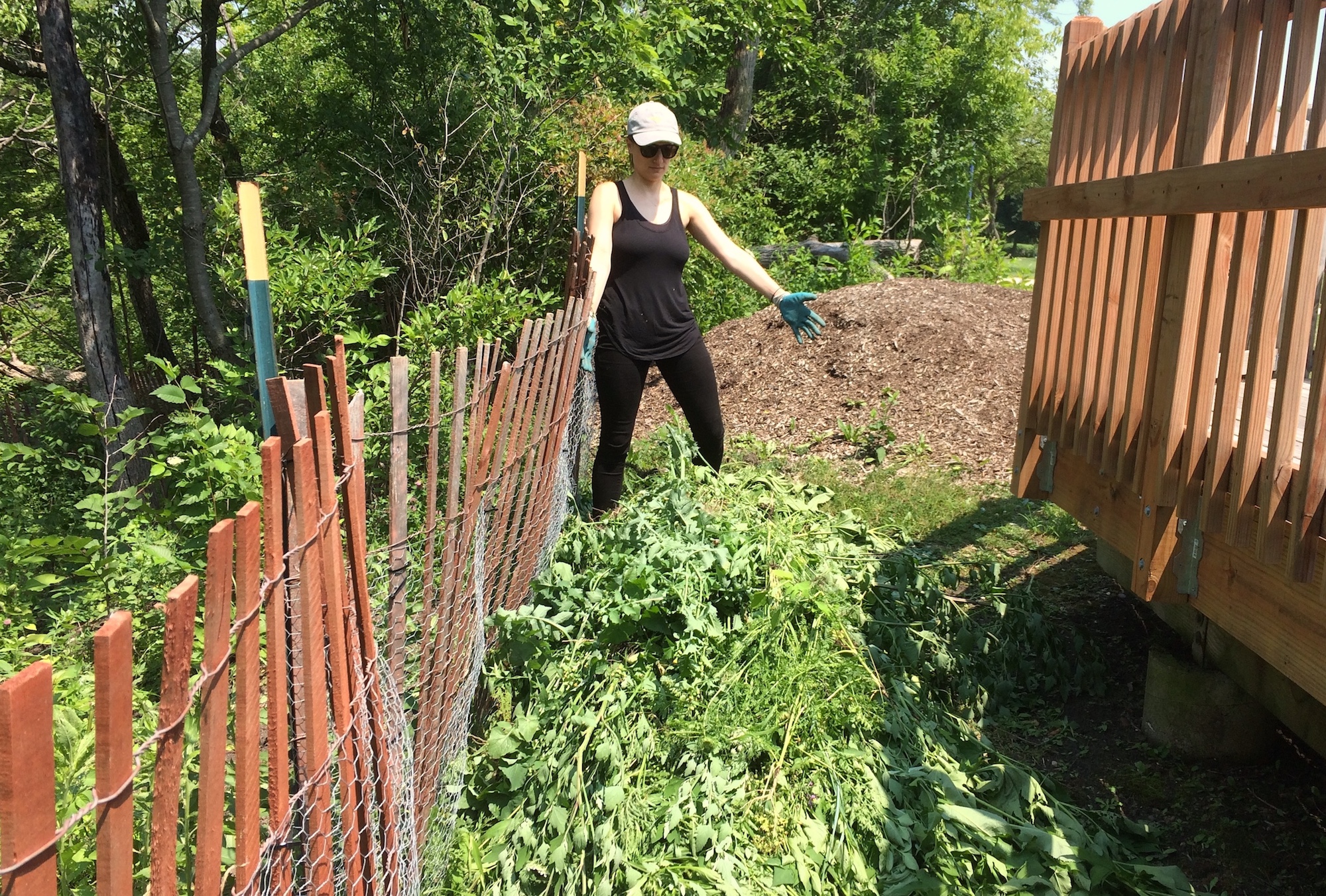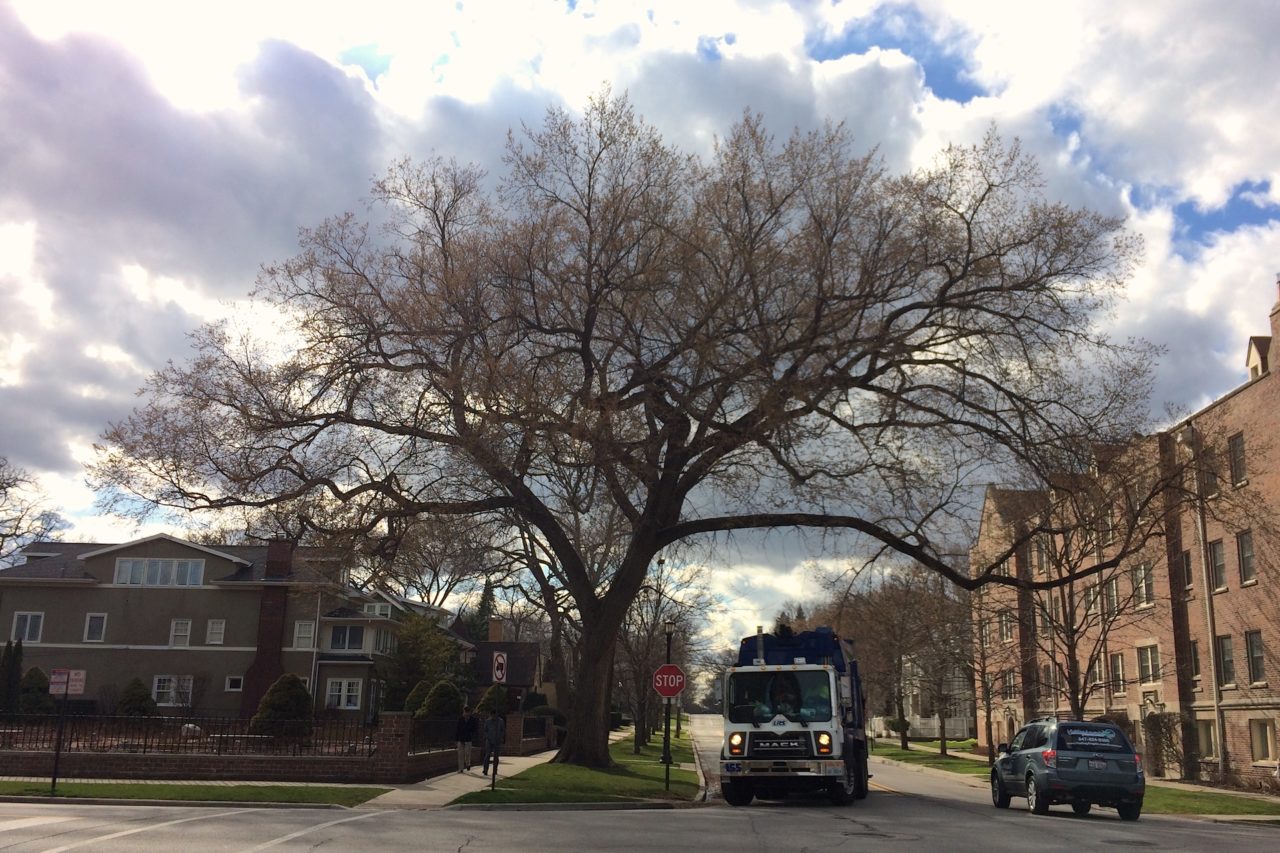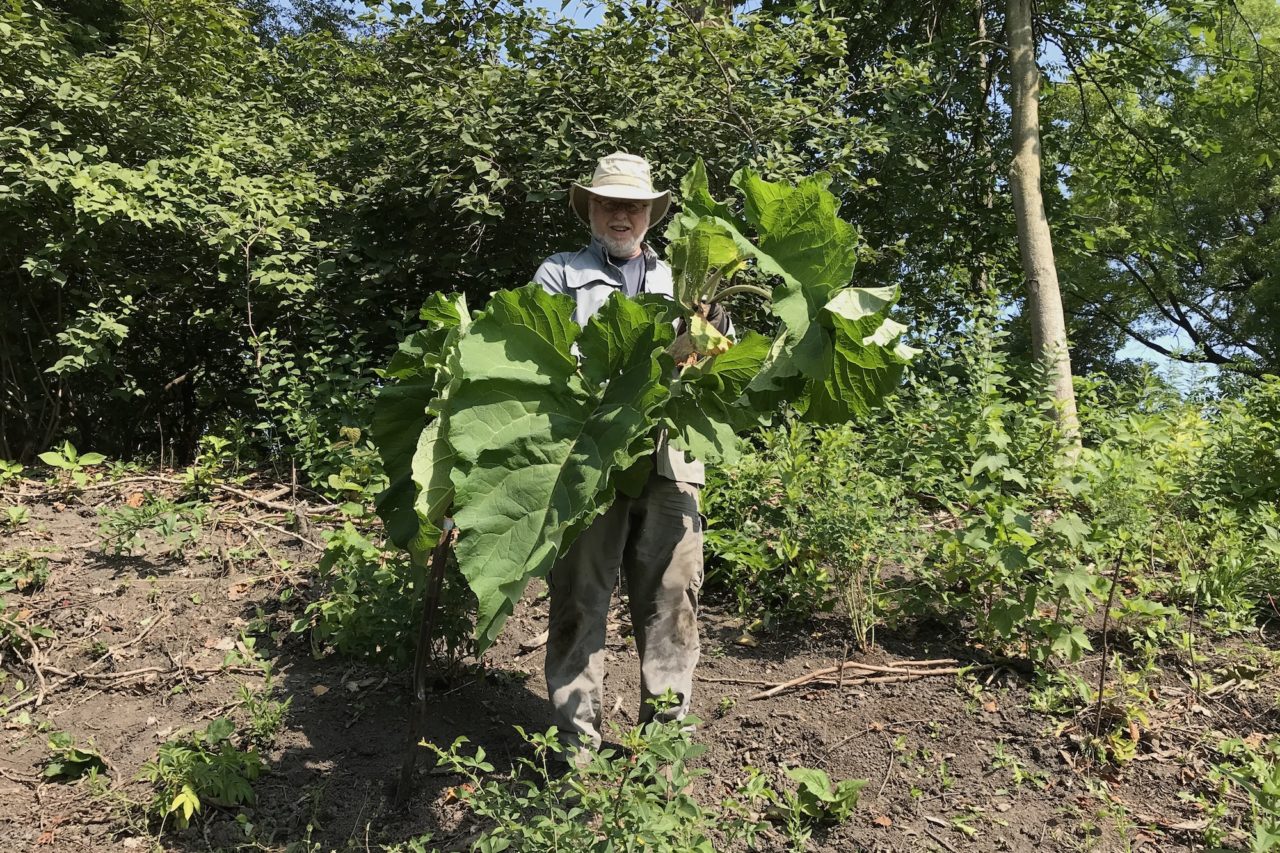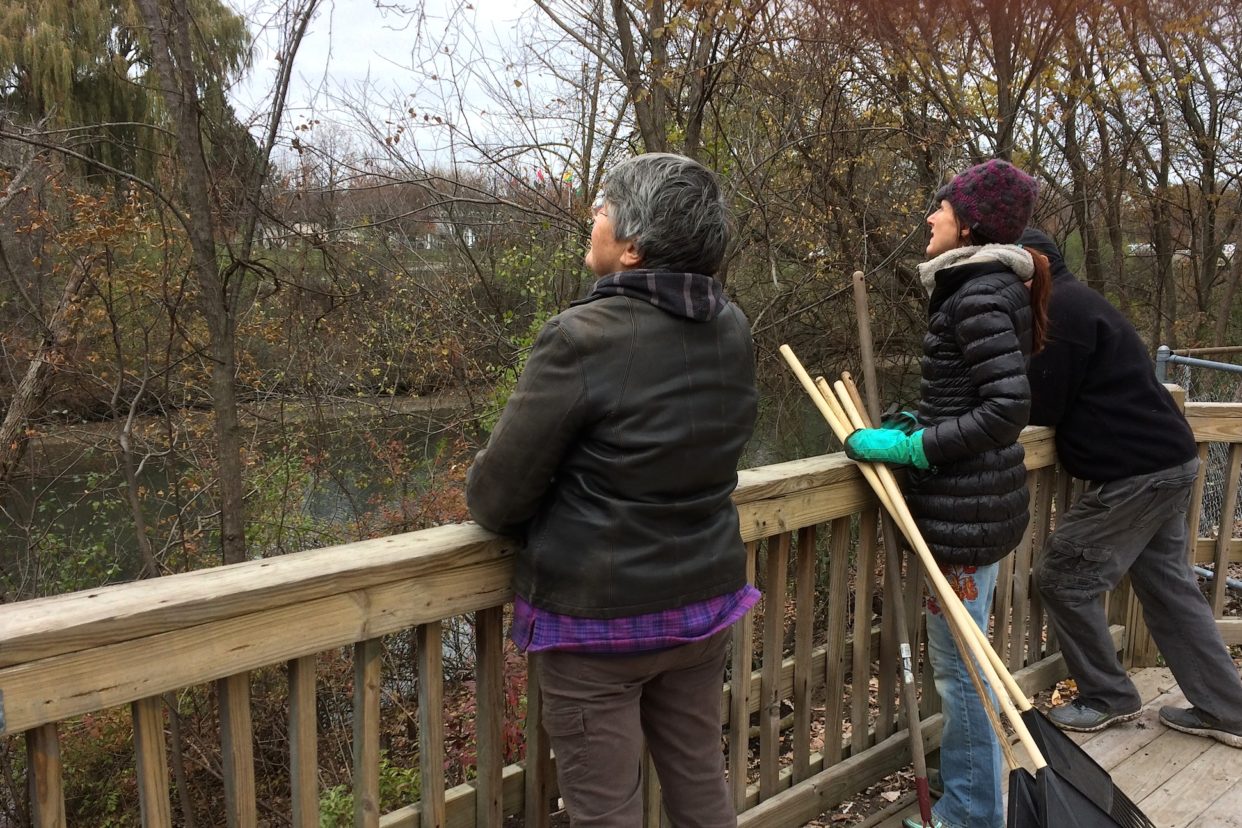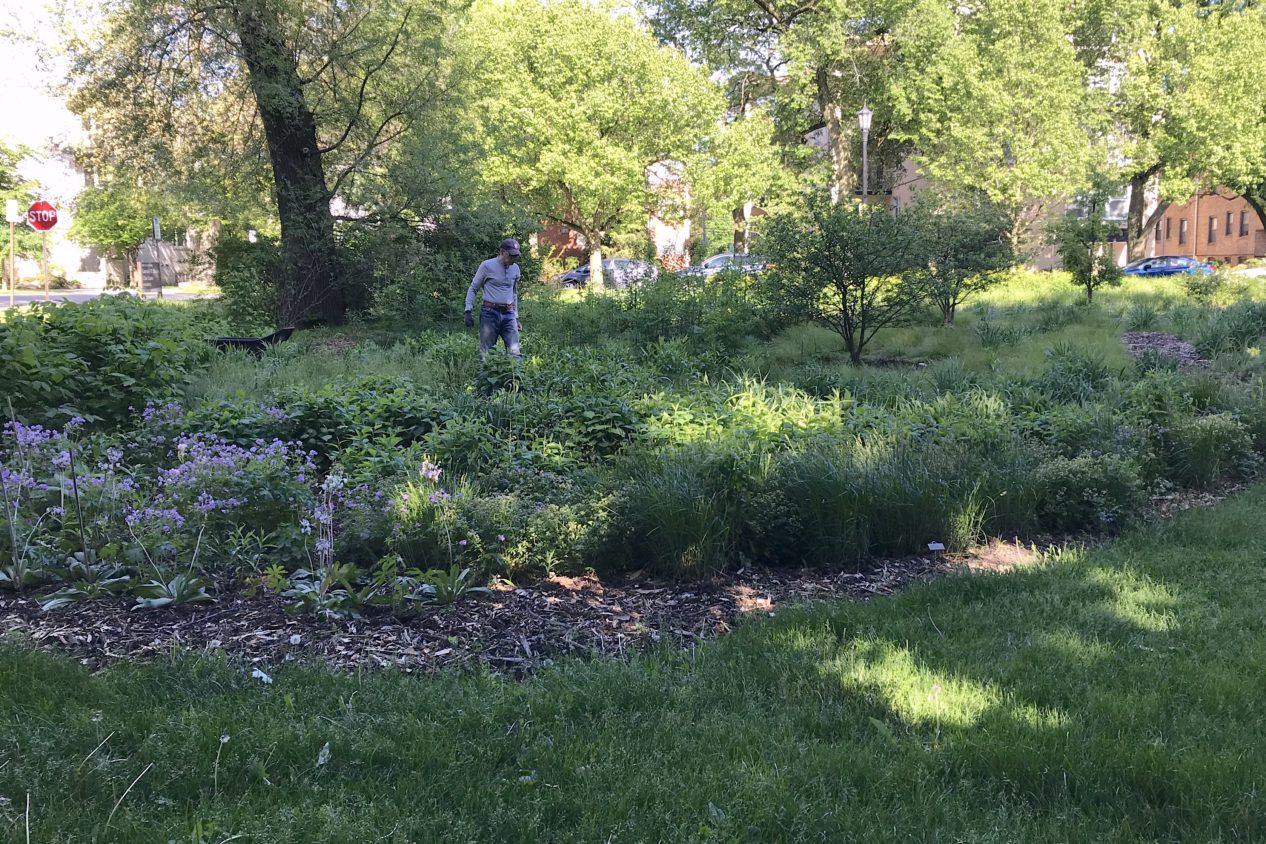One of the misconceptions about native plants is that you can sow seeds and let nature take its course. In reality, it takes planning, good advice, and work to establish a thriving community of native plants. Some of that work involves clearing and managing other more aggressive plants. That’s been our main focus over the last several weeks. The long spring and abundant rain earlier in the season were good for our new native plants. They also were a boon for what most of us call weeds.
What is a weed? The word refers loosely to groups of plants that are actually very different. There are the “classic weeds” most of us recognize, like non-native dandelion and Queen Anne’s lace. They can generally co-exist with native plants and tend to retreat as a native plant community is established. These “classic weeds” also include some troublesome native species like common ragweed and the ubiquitous but less familiar horseweed. This gigantic specimen we pulled out of the Civic Center Garden the other day demonstrates why it could be a problem.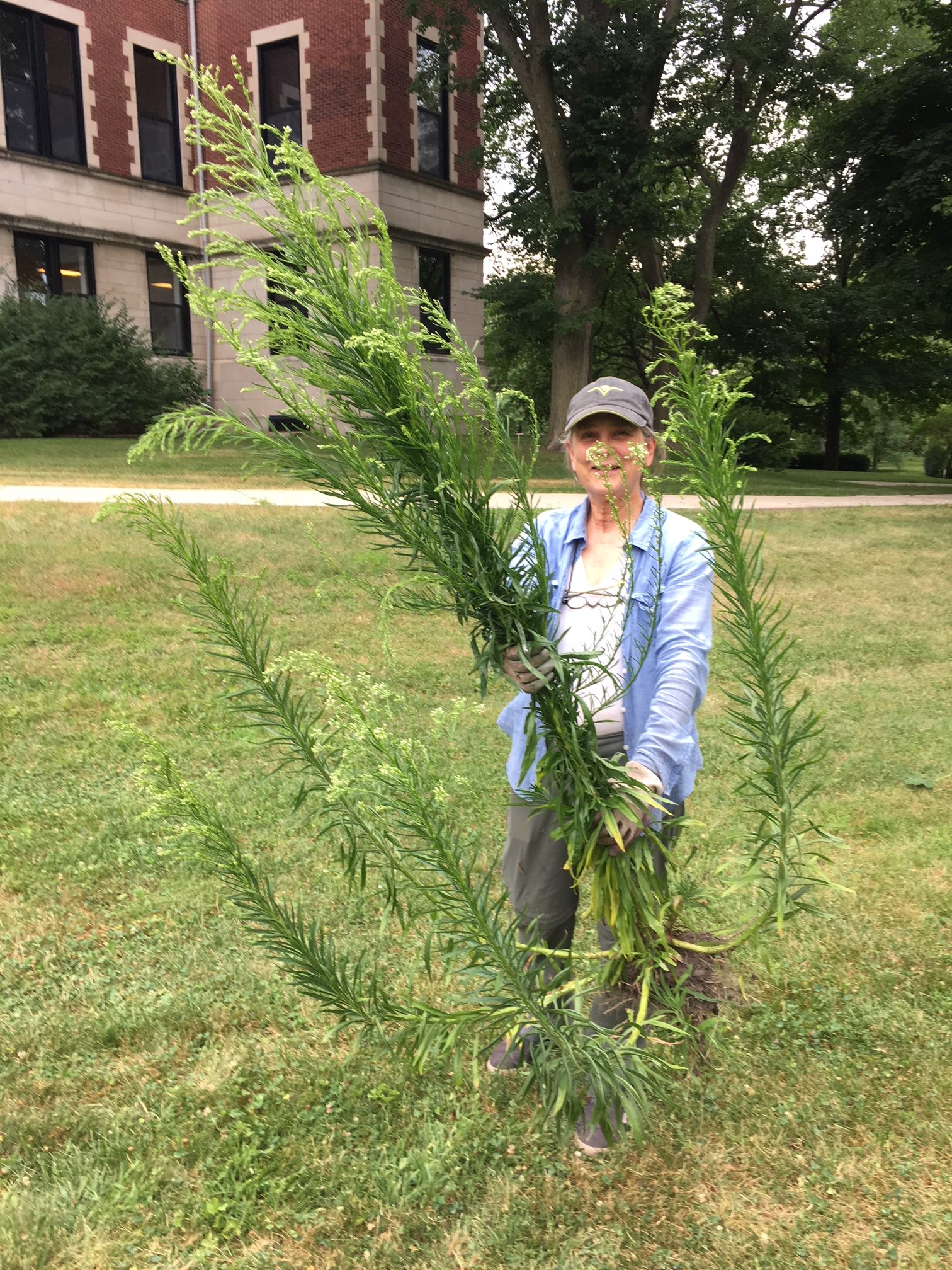
And then there are aggressive or invasive species. As restoration ecologists Stephen Packard and Laurel Ross note, these can “seriously degrade or even destroy high-quality natural communities and are particularly dangerous in disrupted or recovering systems.”* Buckthorn is a prime example and one of our region’s most troublesome invasives.
Why are these plants such fierce competitors? One local source explains: “Natives are plants and animals that historically evolved and adapted to the ecosystem at that site. Native communities developed under the specific conditions that shaped the surrounding landscape. Invasives are species that are able to take advantage of degraded ecosystems or altered conditions to displace or eliminate native species, upsetting the balance of the local ecosystem. The term is more about the behavior of the species rather than about where it came from originally.”**
Not all non-native species are invasive. In fact most can co-exist with native plants. The aggressive non-native species like buckthorn, honeysuckle, and garlic mustard share some traits that give them an edge: “efficient photosynthesis, habitat flexibility, rapid growth rate, high levels of seed production, long-range seed dispersal, and resistance to pathogens and pests.” Add to that the absence of the predators and diseases that evolved along with them as natural controls. “By increasing in number and displacing native species, they out-compete natives for resources, particularly water and sunlight.”
Work on invasive shrubs and trees (like buckthorn and Asian honeysuckle) often takes place in colder weather. For now, our focus is on controlling the unwelcome herbaceous plants before they can spread their seeds.
Volunteers are the backbone of our work. No experience is needed, and even an hour now and then makes a difference. If you can help, get in touch as evanstonhabitat [at] gmail.
* Stephen Packard and Laurel M. Ross, “Restoring Remnants.” In The Tallgrass Restoration Handbook.
** Managing Invasives. Forest Preserves of Cook County (PDF).
Thanks to Peter Laundy for the photo of horseweed.
— Wendy Pollock
